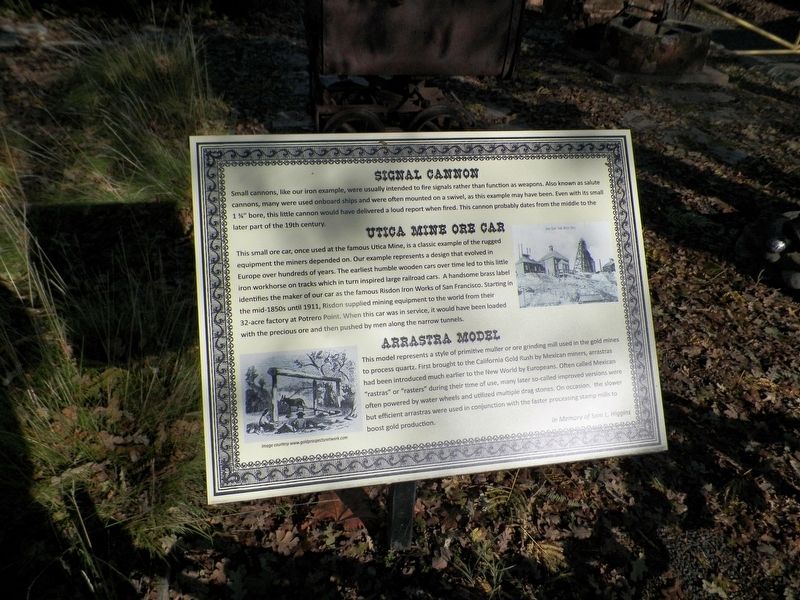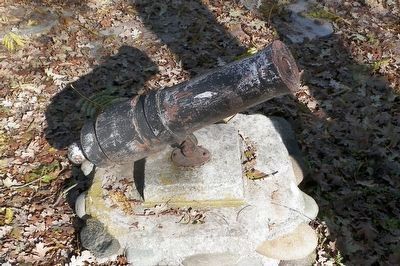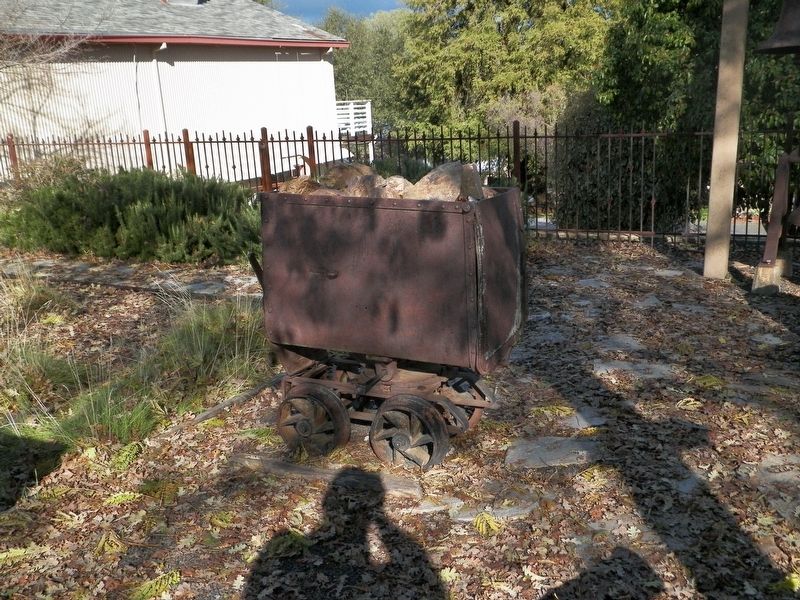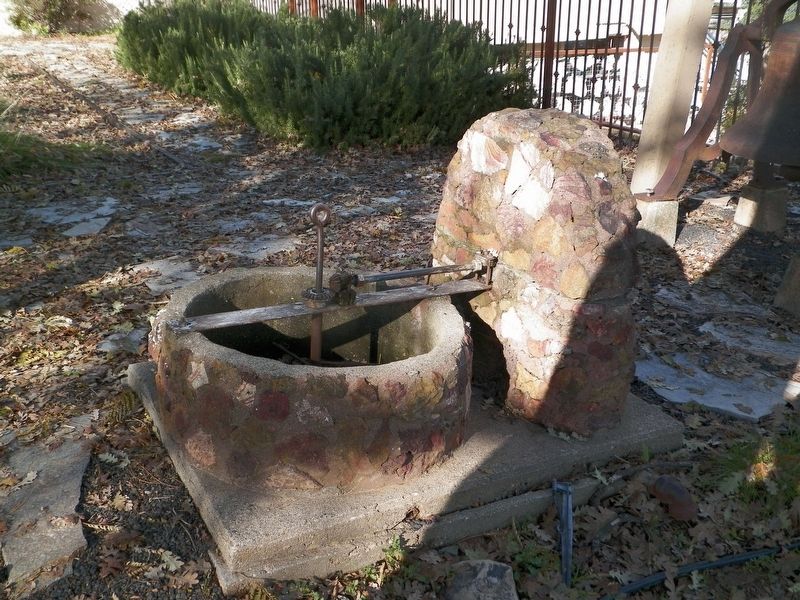Angels Camp in Calaveras County, California — The American West (Pacific Coastal)
Signal Cannon/Utica Mine Ore Car/Arrastra Model
Inscription.
Small cannons, like our iron example, were usually intended to fire signals rather than function as weapons. Also known as salute cannons, many were used onboard ships and were often mounted on a swivel, as this example may have been. Even with its small 1-3/4" bore, this little cannon would have delivered a loud report when fired. This cannon probably dates from the middle to the later part of the 19th century.
This small ore car, once used at the famous Utica Mine, is a classic example of the rugged equipment the miners depended on. Our example represents a design that evolved in Europe over hundreds of years. The earliest humble wooden cars over time led to this little iron workhorse on tracks which in turn inspired large railroad cars. A handsome brass label identifies the maker of our car as the famous Risdon Iron Works of San Francisco. Starting in the mid-1850s until 1911, Risdon supplied mining equipment to the world from their 32-acre factory at Potrero Point. When this car was in service, it would have been loaded with the precious ore and then pushed by men along the narrow tunnels.
This model represents a style of primitive muller or ore grinding mill used in the gold mines to process quartz. First brought to the California Gold Rush by Mexican miners, arrastras had been introduced much earlier to the New World by Europeans. Often called Mexican "rastras" or "rasters" during their time of use, many later so called improved versions were often powered by water wheels and utilized multiple drag stones. On occasion, the slower but efficient arrastras were used in conjunction with the faster processing stamp mills to boost gold production.
Erected by Angels Camp Museum.
Topics. This historical marker is listed in this topic list: Industry & Commerce.
Location. 38° 4.532′ N, 120° 32.743′ W. Marker is in Angels Camp, California, in Calaveras County. Marker is on South Main Street (California Route 49), on the left when traveling south. This marker is in the "garden" area to the south of the museum building and next to the horseshoe driveway. Touch for map. Marker is at or near this postal address: 753 South Main Street, Angels Camp CA 95222, United States of America. Touch for directions.
Other nearby markers. At least 8 other markers are within walking distance of this marker. Bells (here, next to this marker); Ol' Beth (a few steps from this marker); Serpentine Drill Core Section (a few steps from this marker); Stalactite/Stalagmite (a few steps from this marker); Camp 9 Powerhouse Pelton Wheel (a few steps from this marker); Just Jenny (a few steps from this marker); Hogarth Stamp Mill (about 500 feet away, measured in a direct line); a different marker also named The Hogarth Stamp Mill (about 500 feet away). Touch for a list and map of all markers in Angels Camp.
Credits. This page was last revised on March 5, 2017. It was originally submitted on February 26, 2017, by James King of San Miguel, California. This page has been viewed 368 times since then and 20 times this year. Photos: 1, 2. submitted on February 26, 2017, by James King of San Miguel, California. 3, 4. submitted on February 27, 2017, by James King of San Miguel, California. • Syd Whittle was the editor who published this page.



